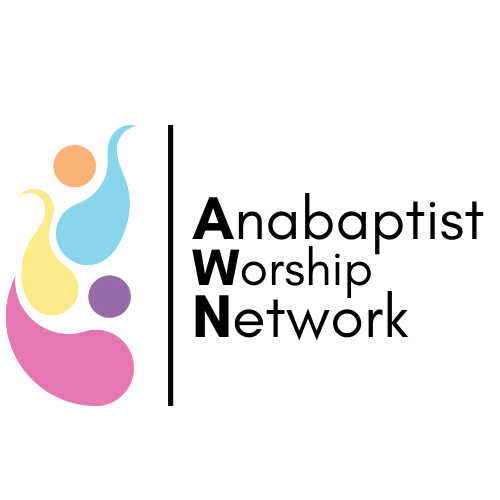Reconciliation Recommendations for Worship
In an AMBS course for worship leaders engaging the new Voices Together hymnal, we were asked to consider the following question for an assignment: How can our congregation’s worship focus more on justice and racial reconciliation? We found some resonance in our respective responses and collaborated to share them more broadly. We offer these suggestions not as a comprehensive list, but as a starting point for congregations who are considering this very same question. We are two white women, writing from the context of majority-white congregations, with white pastoral leadership. This blog post is written both from and for that specific context.
Amplify the voices of Black people, Indigenous people, and people of color (BIPOC) in our worship: choose songs, images, and prayers written by BIPOC siblings in faith.
commit to this practice throughout the year, not just for occasions such as World Communion Sunday, Black History Month, or Martin Luther King, Jr. Sunday
be aware of including race when describing an author or composer - if we include race when talking about BIPOC authors / composers, we should include race when talking about white authors / composers - this is important for interrupting the pattern of treating whiteness and white people as the ‘norm’
avoid tokenizing and appropriation
Cede the pulpit to BIPOC preachers (zoom church has made this even more accessible!); be sure to follow up with collective discernment about how their preaching calls us white folks and majority-white communities to action. Do not only ask BIPOC preachers to preach on racial justice. Instead, explicitly affirm that your community wants to hear whatever word they are called to preach.
Preach informed by theologies that emerge from marginalized communities: womanist and feminist theology, queer theology, Black liberation theology, Latinx liberation theology, Palestinian liberation theology, and other liberation theologies of many and varied stripes!
Use expansive language and images in worship (in essence, don’t teach white Jesus)
share books with children that show a wide variety of characters, including race, gender, ability, etc. - be explicit in noticing and naming differences with children
help children (and adults!) to imagine the many beautiful faces of God
use songs and worship resources that name and celebrate diverse images of God and humans
feature art that uses racially diverse images of Jesus and other people in the Bible
Honor the Indigenous peoples on whose unceded land we live and gather
in word:
speak land acknowledgements in worship and other gatherings
in one of our churches, this is a way to honor the generations of native stewardship of the land, name the violence of colonialism, and offer opportunities to live in repaired relationship with the local indigenous community
this map can help you identify your local tribes, and this article could be a helpful resource in your planning
pray for your local first peoples
in deed:
commit to ongoing relationships with your local tribe(s)
provide regular opportunities for reparative action and/or engagement with their events, efforts, and requests of allies
invite households and/or your congregation to contribute financially to the first peoples of your land (for example Real Rent Duwamish in Seattle)
Support BIPOC-led movements in your local community
in word:
post signs
resist white silence by speaking out in support of your local BIPOC-led movements, and against racism in its many forms
incorporate prayers for these movements into worship
in deed:
contribute offerings and designate church funds to the Movement for Black Lives and other BIPOC-led organizations organizing for justice, including those led by immigrants and refugees in our communities
look for opportunities to be in meaningful relationships with BIPOC neighbors and churches, by following the lead of these communities
Examine the whiteness and internalized white supremacy of your church community
do an anti-racism audit of the church
there are many organizations that facilitate these types of processes
this list compiled by MCUSA is a great place to start
have a series of discussions about the implications of the audit for worship
create an action plan
watch out for “white savior complex” in worship, especially in how we talk about communities of color in North America and people around the world
Learn from our mistakes
listen carefully when corrected or called out
seek to repair harm done
take the opportunity to learn more
change our actions in the future
Beth Peachey is a teacher and musician. She teaches piano and is the Curriculum Coordinator at The People's Music School. She has taught music in a variety of settings, including during a four year term with Mennonite Central Committee in Guatemala City. She lives with her husband and adorable 5 month old son in Chicago, where she participates in worship and music leading at Chicago Community Mennonite Church.
Megan joined the ministry team of Seattle Mennonite Church as Lead Pastor in September 2015, after a decade of pastoral ministry in Chicago. She is a graduate of Iliff School of Theology in Denver CO and Goshen College before that, as well as an alum of the Intermenno Trainee Program in Germany and Switzerland. Somewhere in there Megan lived in Seattle as a young adult, for a few glorious years of exploring all that the city and surrounding gorgeous landscape have to offer. She is glad to be back making a home in the Pacific Northwest, and to have joined the exceptional SMC pastoral team. Hiking and Reading are her most essential restorative activities. She looks forward to someday again going to concerts, frequenting the theatre to see her actor husband - Jon Stutzman - perform, and going on traveling adventures both large and small.


